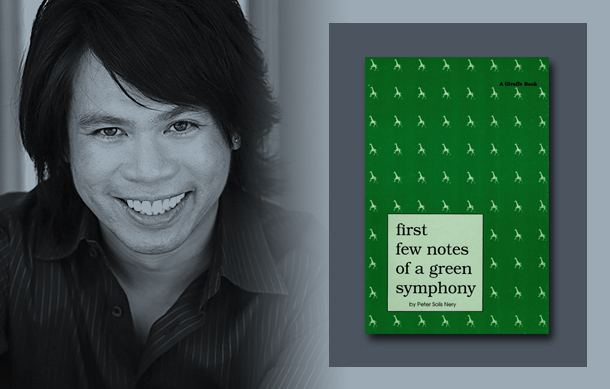What is the Hiligaynon Revolution of 2014?
It is a call for a new system in the Hiligaynon language advocated by Peter Solis Nery to advance Hiligaynon for the third millennium and the 21st century, and to accommodate the demands of the globally aware generation. I published my manifesto on “The Hiligaynon for the New Millennium and the Globally Aware Generation” over the Internet on June 12, 2014.
What changes do you advocate?
Let’s just start with two. First, the adoption of the 28-letter alphabet after the new Filipino alphabet of 1987. And second, the omission of the diacritics or stress marks. I believe that when we have adopted these two proposals, we can truly simplify Hiligaynon for the new and future generations. The 28-letter alphabet is liberally inclusive, and opens up the language to greater possibilities including new concepts and terminologies. The omission of stress marks, already the trend anyway, will prove to make Hiligaynon even more user-friendly. There will be additional changes and guidelines, but at the moment, these two should be popularized with priority. These should be the landmark changes of my language revolution.
Why 28 letters?
Why not? For Hiligaynon to survive in the third millennium, it needs to adapt, borrow foreign words, and maybe invent new words for concepts that we don’t already have. Globalization is a 1980’s idea that came with technological innovations including the Internet and shipping containers. I think we should call it “globalization” instead of “globalisasyon.” I also think we should call a “cellphone” a “cellphone” and not “selpon” or “silpun.” Hiligaynon users are not illiterate, so why should we dumb down our Hiligaynon spelling? To spell properly, we need the 28 letters.
Why drop the stress marks?
Because other than the French people, and other Europeans, nobody really uses them anymore. And if we use them in Filipino or Hiligaynon, we are using them differently from what they are in their globally accepted use. We are not up to international standard. Look at the French stressed word “café” for coffeehouse, for example. It is correctly pronounced /kafey/. If you follow the Filipino reading of that stress mark on the letter ‘e’, you’ll read it as /kafeh/. Now, if I want Hiligaynon to be respected alongside other languages in the international community, I would really push for a Hiligaynon that an international community can understand in terms of common stress marks. If our accent marks, called diacritics, are confusing to the international users of the same marks, I just think that they should go, and make our lives simpler.
What do you hope to gain with this revolution?
Just for the Hiligaynon language to advance with dignity. I want our writers to accommodate global and modern ideas without dumbing down the spelling and concepts for our readers because I think that that is very insulting to Hiligaynon users. Why do you want to spell “seaman” as “siman,” or “autograph” as “awtograp”? Why do you want to perpetuate the joke that Visayans cannot distinguish V’s and B’s, P’s and F’s so the Hiligaynon word for “fairy” is “peyri”? Why do you want to say, “pagpadala sang trabaho sa iban” for “outsourcing,” or “pagpakig-angut paagi sa mga plataporma sang pagtililipon” for “social networking”? I refuse to be insulted anymore. Hiligaynon users are smart people. They can spell correctly, and they can understand foreign words and technical jargons.
What are your credentials for starting this language revolution?
Do I really need a credential to start a revolution? Admittedly, I do not have a degree in Linguistics. But what I have is something greater, and that is the love for Hiligaynon language, and my devotion to it. Just because I am not in the academe doesn’t mean that I can just be ignored. I speak, write, read, edit, publish, and disseminate Hiligaynon. I operate a Foundation dedicated to Hiligaynon literature. I am a Hiligaynon specialist certified by the American Council on the Teaching of Foreign Languages. I am working on a Hiligaynon dictionary project, which I foresee as my legacy. Even if anybody questions my “right” to start this revolution, it will not mean anything to me. I will prevail.
Why do you want to start a revolution now?
Because no one did it before I did! The Filipino alphabet was expanded to 28 letters in 1987—that’s 27 years ago! For whatever reason, Hiligaynon remained forgotten or neglected. It remained stagnant and muddled with slang. The new writers are confused; the veteran writers, quiet or unconcerned. So, let it be put in record that before the Peter Solis Nery’s Hiligaynon Revolution of 2014, the language has suffered a poverty of words and concepts with its 20 letters, and parochial diacritics. After Peter Solis Nery, the language is now fortified to include “coiffeur” properly pronounced as /kwafer/, “immigrants,” “DH,” “OFW,” “calle real,” “años tiempos,” “cellphone,” “same-sex marriage,” “cafe” to mean coffeehouse, “cute,” “like,” “condom,” “eyeball,” “Facebook” not “pisbuk,” among others. Let it also be said that after Peter Solis Nery, Hiligaynon just became a world-class language, not just a regional language/dialect.
© Peter Solis Nery and Iloilo Metropolitan Times: [June 20, 2014]


